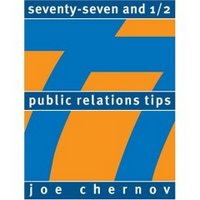 Here's one idea on how Social Media might impact the editorial pitch process...
Here's one idea on how Social Media might impact the editorial pitch process...Among the newfangled tools that's most intriguing for its potential to impact Public Relations practices is "social bookmarking." Putting together the custom del.icio.us page for our template helped enlighten me to the fact that social bookmarks could literally help salvage PR from its critics. This is a place where PR can add legitimate value to the journalist.
"Looks like a bunch of random links to me," you say? Au contraire. Done right, these tools will make the PR pro more strategic, more subtle and invaluable. Let's examine The Old Way & The Social Media Way to pitch the press.
Old Way:
- Craft a clever, custom pitch.
- Convince journalist to take a meeting (and do the bulk of the pre-interview research on their own).
- Offer to help-out with additional materials and "anything else you need..."
- Maybe send a god-awful press-kit in advance of the meeting, knowing full well that there were, maybe, 2 worthwhile paragraphs in the whole kaboodle.
- Follow-up too diligently, until article breaks.
- Ask journalist's editor for an after-the-fact clarification to soothe pissy client CEO.
- Craft a custom del.icio.us page with lotsa links to relevant background info about client execs, market, products, previous coverage.
- Annotate these links with the all-important "WHY," e.g., "this article from 6 months ago did a good job of summing up the market factors that spawned (client's) idea."
- Craft a clever, custom pitch.
- Convince journalist to preview del.icio.us page and get back to you with questions.
- (Convince journalist that the best person to answer these questions is your client.)
- Suggest journalist subscribe to the custom del.icio.us page's RSS feed, until the editorial process concludes, so that they can have 24/7 access to any relevant info that pops up in the meantime (courtesy of the PR pro's diligent, on-going research. ...More strategic!)
- Conduct client interview & follow-up diligently.
- But now, use updates (and associated notes) to the del.icio.us page to tap journalist via their RSS reader --- which means fewer of those intrusive, unhelpful "anything else you need?" emails. ... More subtle!
- The PR pro is now as attuned to the story's nuances as the journalist, and ultimately is far better equipped to pitch new angles on the same story, to additional reporters. ...Invaluable!
- If story sucks, reach out to journalist; but if all else fails and these inaccuracies could hurt the client's business, help the client to blog about the errors --- very, very diplomatically.
But caveats aside - NEW does not equal BAD. NEW is the future. Today, we just get to peek at it. And prepare.


























